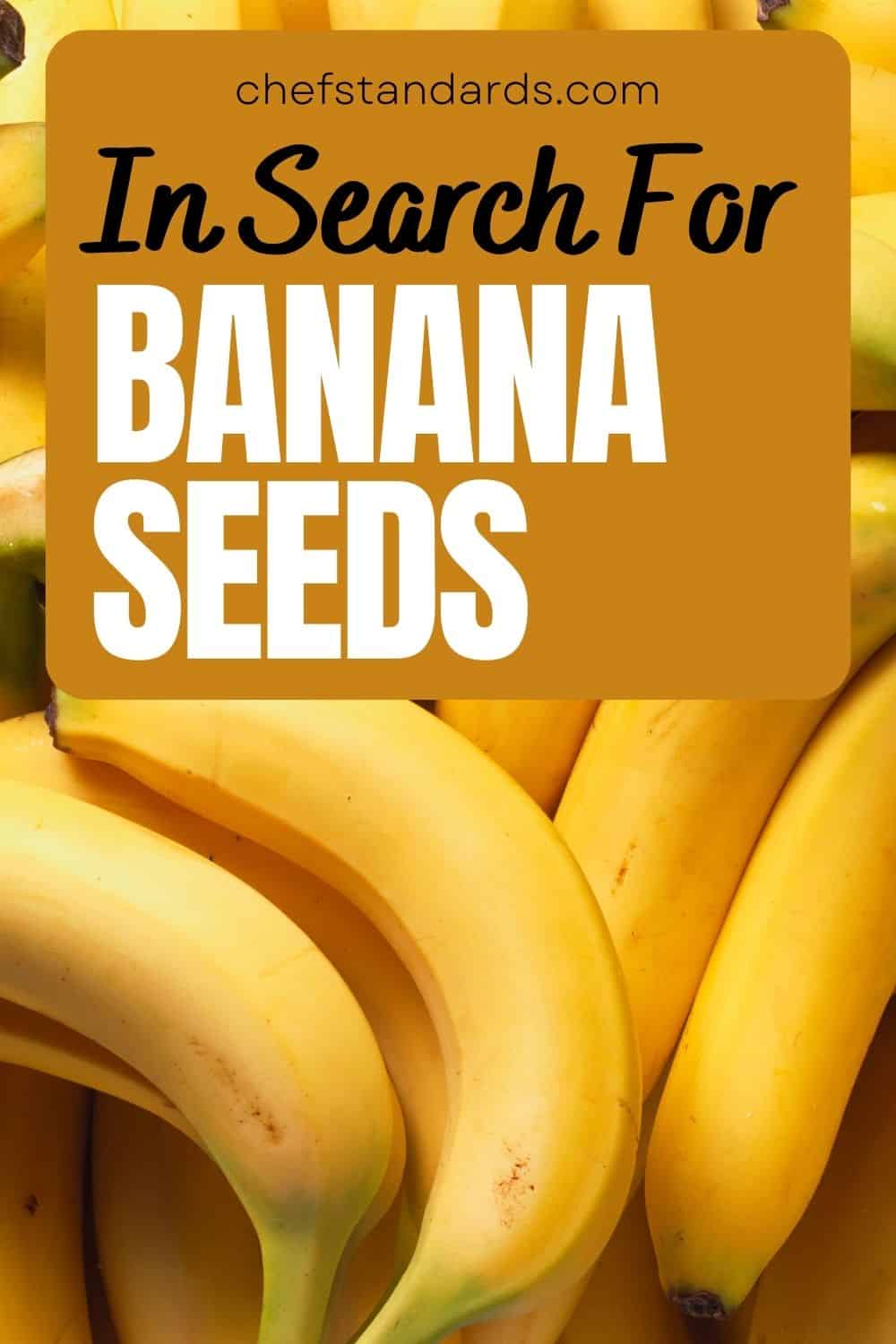It has a nice appearance with its unique shape and beautiful color. It is sweet and creamy and full of important nutrients that are extremely beneficial to your health. Because of all that, it is one of the favorite snacks among many Americans.
It is Her Majesty, the banana. But, although it is so widely consumed, there are still many mysteries around it.
Many people don’t even know that there are various types of bananas and that the ones we all buy at the grocery store aren’t really natural bananas. It is a genetically modified type of banana known as the Cavendish banana.
So, hard-core banana lovers tend to ask questions and one of them is “Do bananas have seeds?”.
Generally speaking, bananas have seeds, but only wild bananas. Commercial bananas, which you buy at the grocery store, do not contain typical seeds.
In order to find out more about this interesting topic, continue reading.
So, Do Bananas Have Seeds?
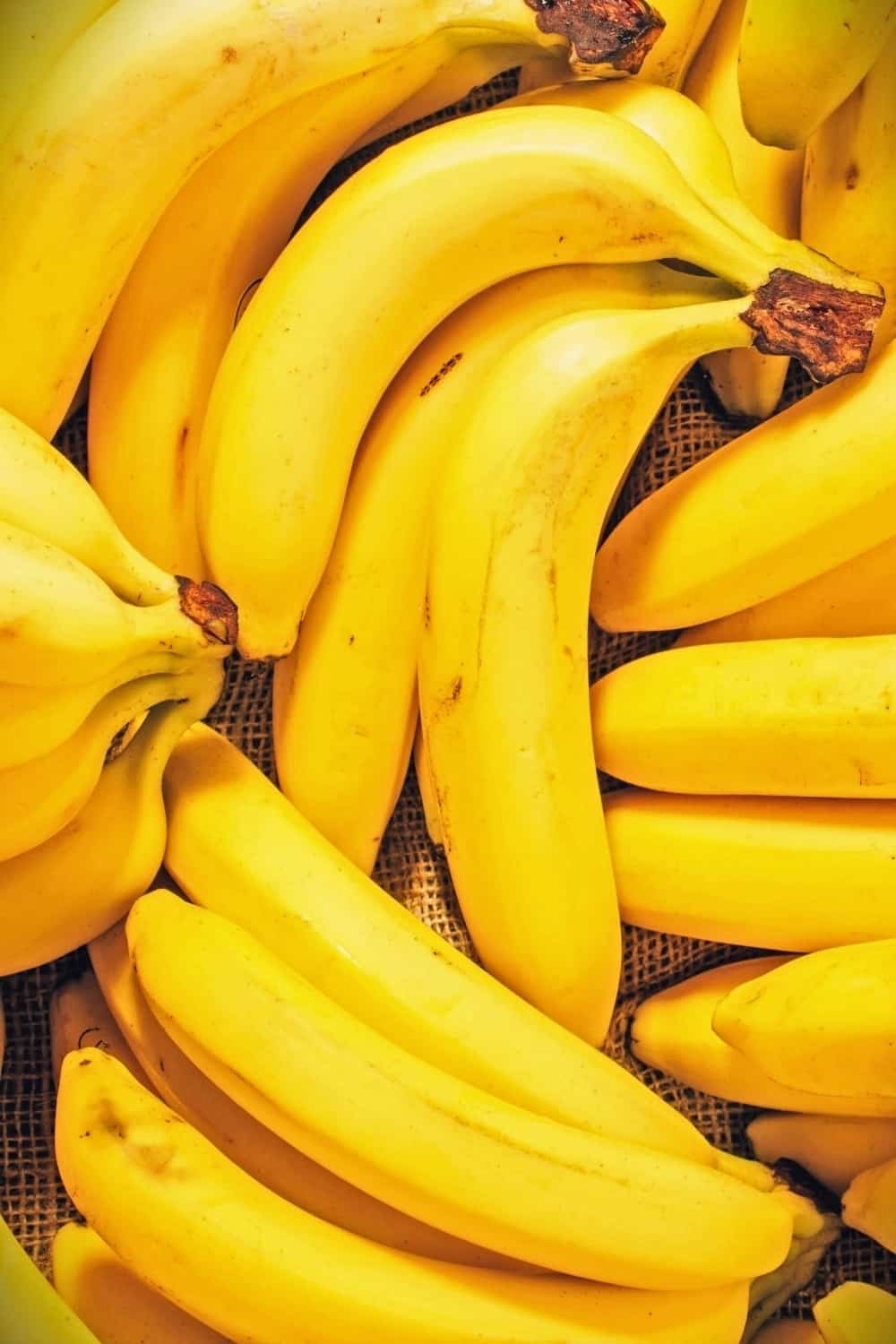
As I already said in the introduction, commercially grown bananas do not contain seeds. Those bananas, known as Cavendish varieties, are genetically modified to be sweeter and creamier and they are seedless bananas.
There are various types of bananas at grocery stores and they differ from one another by their shapes and sizes, as well as color and flavor profile. You can find small, medium, or large bananas.
You can also find yellow, red, black, or even blue bananas. Blue and black bananas are plantains and they have some differences when compared with Cavendish bananas.
They are longer and skinnier and they are not as sweet as Cavendish varieties. They also include seeds.
I also have to mention one other variety of bananas known as the Lady Finger banana. This type of banana also has tiny black seeds which you can find when you cut it open.
If you go deep into the wild where banana plants grow, you will surely find many different banana varieties and most of them with banana seeds inside.
However, those varieties of bananas are not so suitable for consumption because they are more tart than sweet and because they have large seeds that are difficult for our digestive system.
This is the main reason why experts created commercial bananas that are sweeter, creamier, and easier to consume.
Do Commercial Bananas Have Seeds?
If you are in search of seeds in the bananas that you just bought at the grocery store, I have to disappoint you. You won’t find real seeds in those bananas, only smaller seeds that are not even real ones because you can not grow a new banana plant from them.
The main reason for that lies in the fact that commercial bananas are not grown from the seeds of bananas, but rather from a bulb or rhizome that represents an offshoot of a banana plant.
Commercially grown bananas are propagated from cuttings taken from the underground stem or corm of the parent plant. New plants are started in polyethylene bags that are filled with compost and a mixture of soil.
When they are one foot tall, they are planted out on a field. After about 7-12 months, they will produce a banana flower that will open in a few days revealing tiny bunches of bananas that don’t contain any seeds.
This is how they commercially produce fruit known as bananas, i.e. it is a commercial production of Cavendish bananas that do not contain real seeds.
Do Wild Bananas Have Seeds?
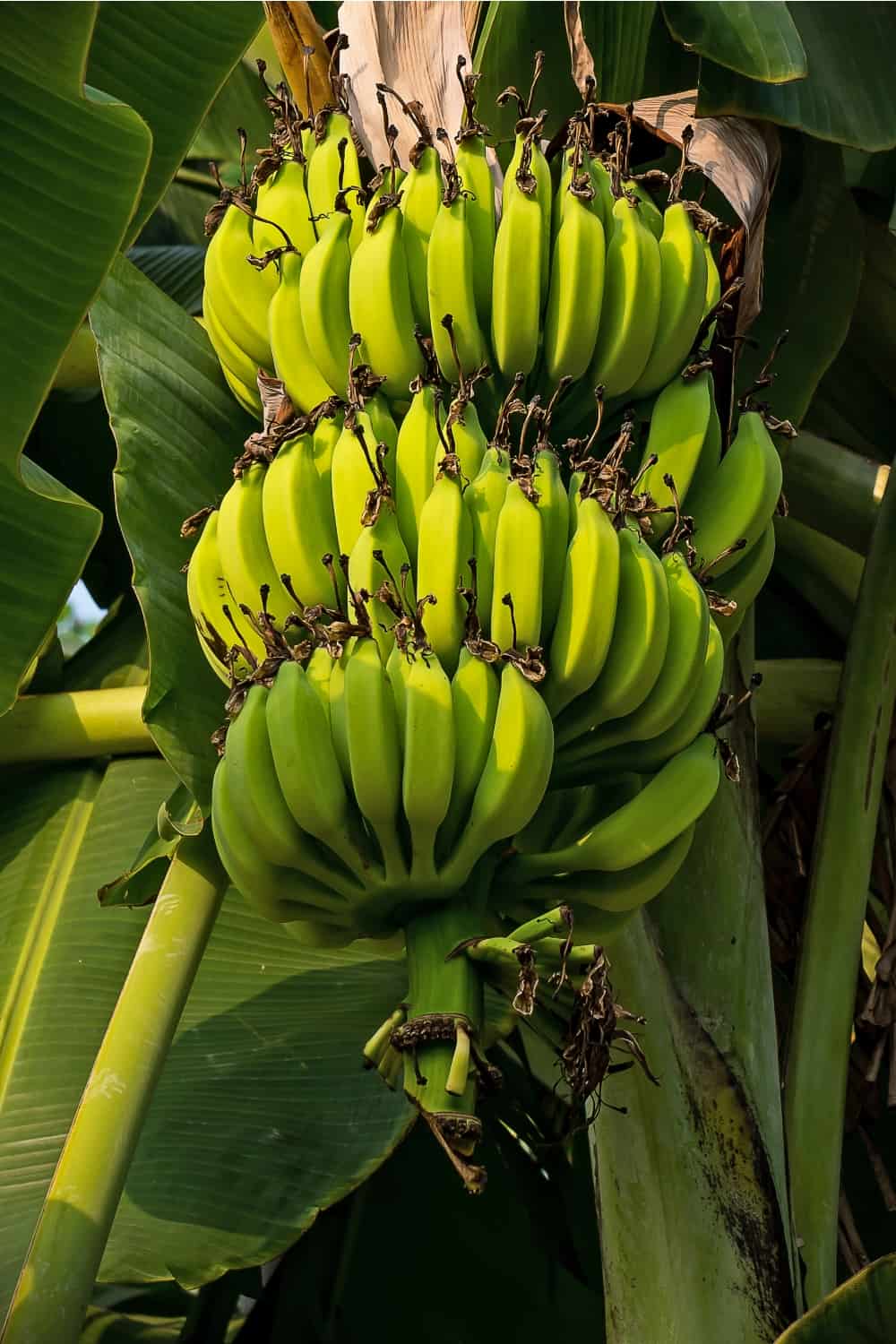
Wild bananas, on the other hand, do contain seeds because they are actually grown from seeds.
Some of the varieties of wild bananas that can be grown from seeds include Musa acuminata and Musa balbisiana.
Although these are edible fruits, i.e. edible bananas, they are not really suitable for consumption because they do not have a sweet flavor and creamy texture like commercial bananas. Also, they have large black seeds that are not ideal for your digestive system.
And the texture of these bananas is firmer than the texture of Cavendish varieties, so that also doesn’t work in their favor.
However, these types of bananas are still very nutritious and, if you don’t have problems with these previously stated facts, you are free to try them or even grow them yourself.
Yes, that is possible and you will learn how to do that in the guideline below.
Where Are Banana Seeds?
If you are dealing with wild reproducible bananas, it is really not hard to find seeds inside of them because they are quite big and visible.
You just need to peel the banana and cut the pulp crosswise, and you will find a lot of black seeds inside. Those seeds are the real ones and it is possible to grow new banana plants from them.
Contrary to wild-seeded bananas, commercial bananas that you can find at most grocery stores and supermarkets, do not contain real seeds. These bananas have three genes and they are known as Triploids, unlike wild bananas that have two genes and are known as Diploids.
Because of that genetic diversity, commercial varieties of bananas do not contain real seeds, but rather just tiny black dots that are useless because they can’t help you to grow a new tree with bananas.
However, if you cut the edible pulp crosswise and take a closer look, you will be able to find little black seeds. But again, I have to emphasize that those are not natural banana seeds, i.e. you can not grow new bananas from them.
What Do Banana Seeds Look Like?
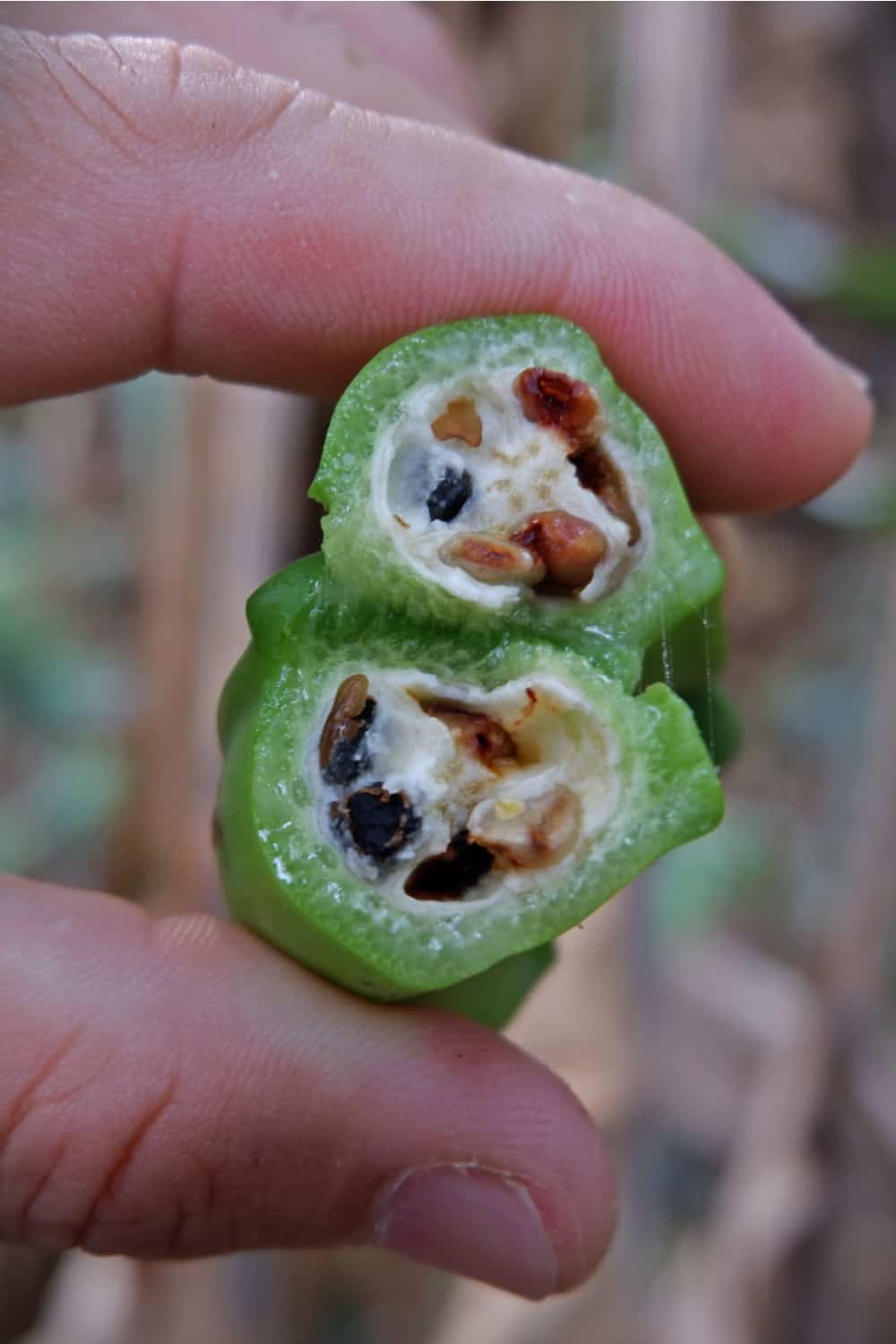
As already explained, commercial bananas are different from wild seeded bananas. The biggest difference is in the seed itself. Real bananas that are grown from seeds contain real seeds that are much bigger, i.e. they have a diameter of around 6mm.
I also have to say that they occupy more space, i.e. they sometimes occupy more space than the pulp itself. Those seeds are black and they are not really suitable for consumption because some people won’t be able to digest them.
Commercial bananas, on the other hand, have much smaller seeds, i.e. seeds that have a diameter of around 0.5mm. Those seeds are also black and they are more suitable for consumption because they are easier to digest.
There are also differences in flavor because the seeds of commercial bananas, alongside their edible pulp, are sweeter than those inside wild bananas, which are more acidic.
How To Grow a Banana Tree From Banana Seeds?
Unlike commercially grown bananas, also known as suckers, naturally grown bananas are cultivated from their seeds. And you can even grow your banana plant if you have some real banana seeds, fertile soil, and a lot of patience. So, let’s take a look at these interesting guidelines.
STEP 1: You first need to soften the banana seeds. You will do that by putting them in a bowl of warm water for 48 hours to help the embryo sprout. Also, you are going to change the water every time it cools down.
STEP 2: After that time frame, you will put the softened banana seeds in a seed tray indoors. It is essential that you use potting soil with a lot of organic compost and more than half sandy loam. This will provide the seeds with the necessary nutrients.
STEP 3: You will sow the banana seeds 1/4 inch deep in a tray. You must know that, when sowing seeds outdoors in a bed, the soil temperature must be above 68 degrees Fahrenheit.
STEP 4: It is essential that you water the tray so that it stays moist enough and so that the seed settles for the process of germination to start. Do not drown the seed because soil that is too wet causes the seed to rot.
STEP 5: While the seeds germinate, it is essential that you take care of the soil temperature that must be at least 60 degrees F. The general rule of thumb is that your seeds will need 5 hours of warm temperatures and 19 hours of cool temperatures.
STEP 6: Now that everything is done properly, it is up to you to be really patient. You can not accelerate the process of germination. Some types of seeds need 3 weeks to germinate and some types need 3 months.
See Also: Do Blueberries Have Seeds? (Everything You Need To Know)
FAQs
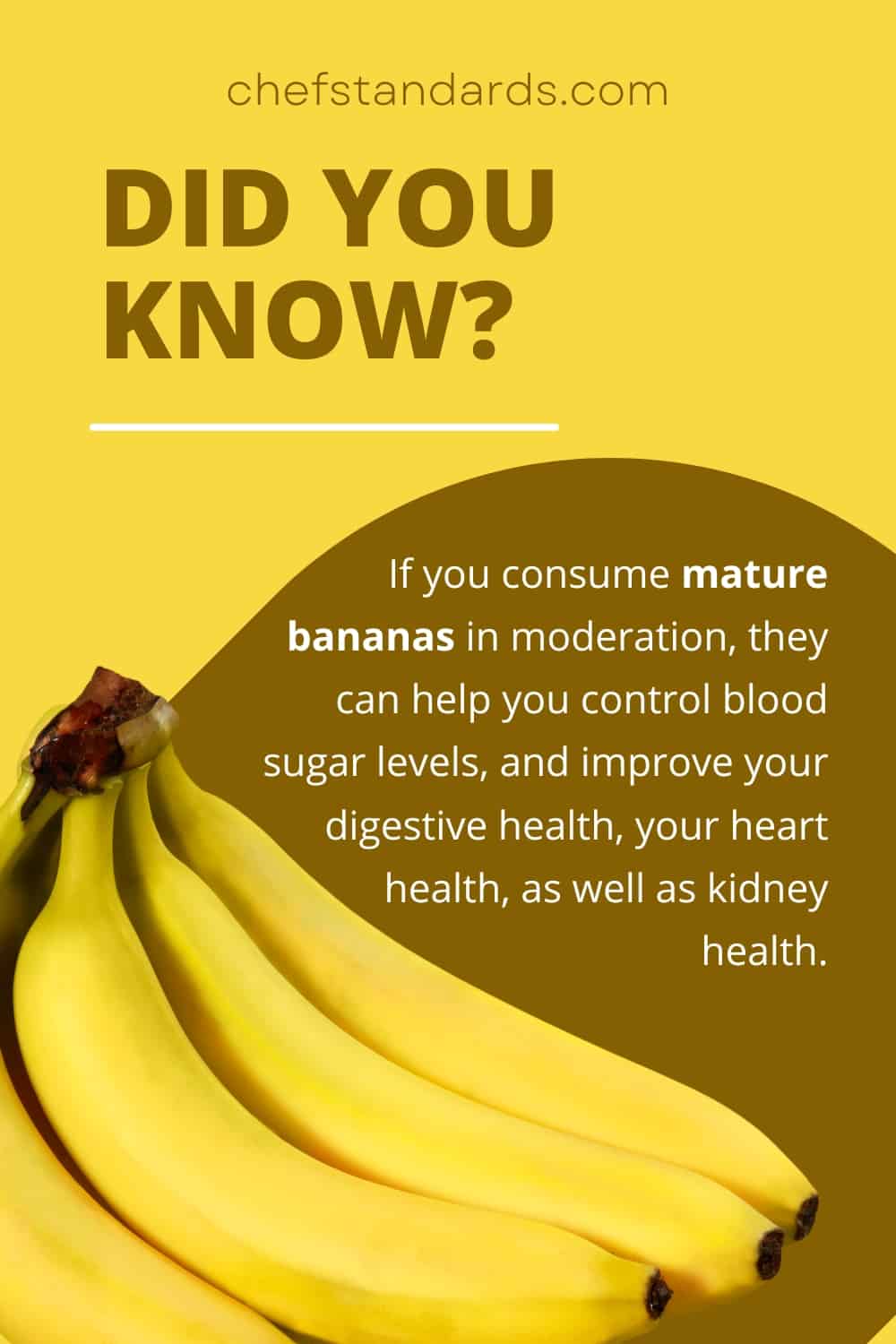
What Are The Health Benefits Of Bananas?
No matter if you have a banana on its own or some type of delicious dish made from banana including gluten-free banana pancakes or banana pudding, it is never a bad idea to incorporate bananas into your diet.
The main reason for that is the rich nutrition profile of bananas. Bananas are full of antioxidants and fiber, as well as various vitamins and minerals including vitamin C, riboflavin, folate, niacin, copper, magnesium, and potassium.
If you consume mature bananas in moderation, they can help you control blood sugar levels, and improve your digestive health, your heart health, as well as kidney health.
If you consume unripe bananas, your insulin sensitivity will be improved, which is great for people who are pre-diabetic or have type 2 diabetes.
Why Do Bananas Not Have Seeds Anymore?
The short answer to this question is “Bananas that you buy from grocery stores these days are not real bananas, but rather genetically modified ones and that is the main reason why they are seedless”.
Real bananas are wild bananas that can be found in parts of Southeast Asia and they are grown from seeds, unlike commercial varieties that are grown from cuttings taken from the underground stem of the mother plant.
How Many Seeds Does A Banana Have?
There are differences in the number of seeds in bananas because the correct number really depends on the type of banana itself. So, if you are dealing with wild bananas, you will find around 20-30 seeds per fruit.
On the other hand, commercial bananas contain 9 seeds per bunch. Also, generally speaking, the yellow and red varieties of bananas contain the most seeds.
Some wild types of bananas can even have hundreds and thousands of seeds but that is not a common occurrence.
Banana Seeds In Banana Demystified
By now you know the answer to the question “Do bananas have seeds?” is not as simple as you might have thought. The main reason for this is the fact that some types of bananas have seeds and some don’t.
So, most wild bananas have seeds and they are grown from those seeds. Those wild bananas can mostly be found in parts of Southeast Asia.
On the other hand, most bananas that you buy at the grocery stores every day are commercial bananas that are genetically modified and don’t contain real seeds. These bananas are known as Cavendish bananas and they are mostly produced in South America.
